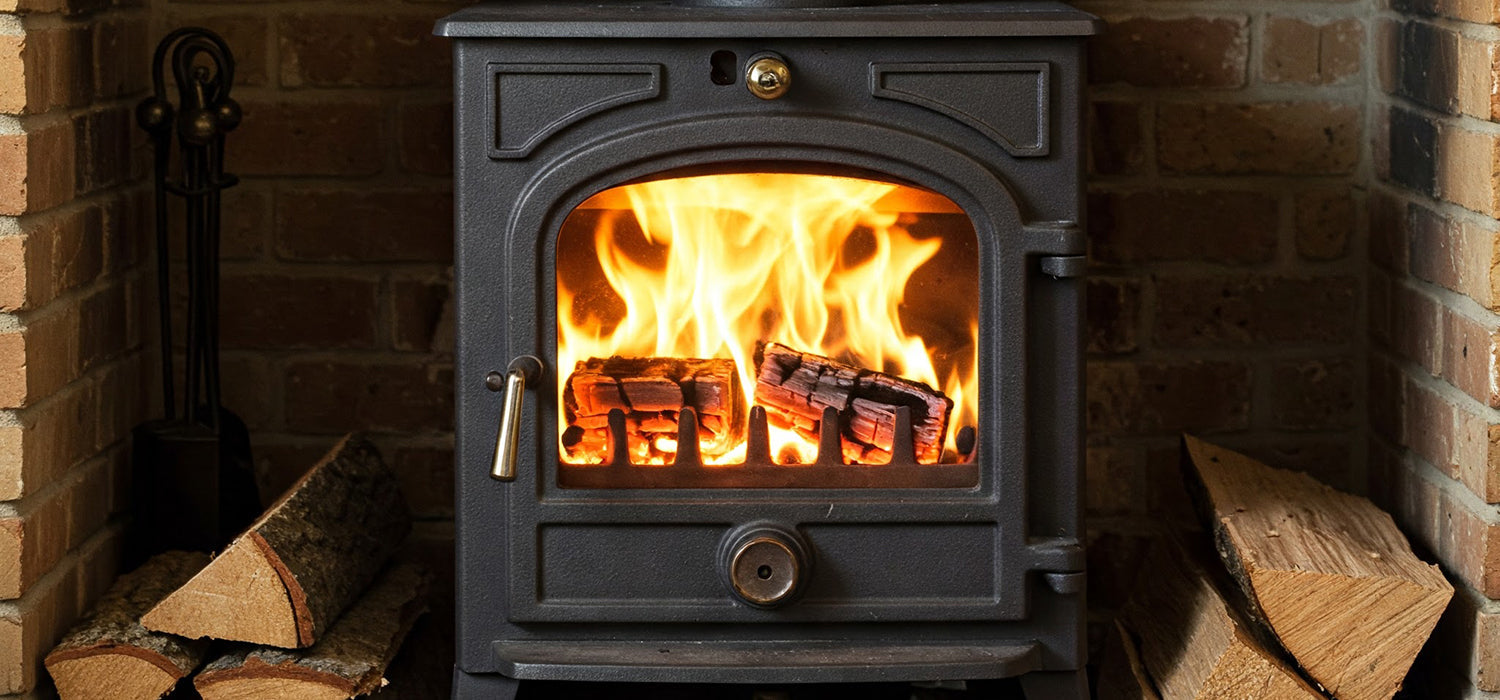
What Is a Log Burner Fan and How Does It Work? Everything You Need to Know
Ever stared at a log burner fan and thought, ‘How does that even spin?’
Short answer: it uses heat from your log burning stove — no plugs, no batteries, just smart science.
Keep reading to learn how it works and why it makes your room feel warmer, faster.
Understanding the Basics of Log Burner Fans
If you've ever been roasting your knees while your feet stay freezing, you’ll know the pain of uneven stove heat.
That’s exactly where a log burner fan steps in. These clever little gadgets sit on top of your log burning stove and, as the stove heats up, they quietly get to work.
The twist? They don’t need batteries or wires to do their job. Some are powered purely by the heat from the stove, while others use electricity for a little extra kick.
Let’s take a look at how they actually work — and which type might be best for your home.
Types of Fans: Thermoelectric (Heat-Powered) and Electric
Thermoelectric Fans
These are the off-grid heroes of the stove world.
Thermoelectric fans use the heat from your stove to generate a tiny bit of electricity — just enough to turn their blades and push warm air across the room.
There’s no noise, no wires, and no switches. Just pop it on top of your stove and off it goes.
Electric Fans
Electric fans do the same job, but they need a little help from mains power or batteries.
They’re often used in larger spaces where you need a bit more airflow, or when you want extra features like speed control or timers.
Think of thermoelectric fans as your low-maintenance, self-sufficient type. Electric ones? More high-tech and customisable.
How Thermoelectric Fans Generate Power
The Seebeck Effect and Temperature Difference
Here’s where it gets clever — and just a little bit nerdy.
Thermoelectric fans work using something called the Seebeck effect. In short, when the base of the fan gets hot and the top stays cooler, this difference in temperature generates a tiny voltage.
That voltage powers a small motor, which spins the fan blades. No batteries. No plug socket.
Blade Design and Air Circulation
It’s not just the power source that’s smart — the blade design plays a big role too.
Instead of pushing air upwards (where it’s wasted), the blades are angled to send warm air outwards and across the room.
So rather than just heating the ceiling, you’re actually warming the space you’re in. Cosy, efficient, and quietly brilliant.
How Electric Log Burner Fans Work
If your stove doesn’t get quite hot enough to power a thermoelectric fan, don’t worry — electric models are still a solid option.
Power Sources (Mains, Battery)
Most electric stove fans plug into the wall, though some models run on rechargeable batteries.
They’re easy to use and deliver a steady stream of airflow, regardless of how hot your stove gets.
Controllability and Features
Electric fans often come with bells and whistles — speed settings, timers, and even remote controls.
If you like the idea of managing airflow from your sofa, or tailoring the fan to suit different rooms, an electric option might suit you best.
Just make sure it’s compatible with your stove and setup.
Benefits of Using a Log Burner Fan
So, why bother adding a fan to your stove? Here’s what makes it a small but mighty upgrade.
Improved Heat Distribution and Room Warmth
Without a fan, heat rises in a column above the stove. Great for the spiders in the ceiling — less great for you on the sofa.
A fan spreads that warmth across the room, taking the chill off corners and keeping things evenly comfortable.
Increased Efficiency and Fuel Savings
With better circulation, your room warms up quicker. That means you use less fuel to get the same result.
Burn fewer logs, save more money, and still stay warm. Win-win.
Reduced Hot Spots
Tired of having one red-hot chair by the fire while the rest of the room’s chilly?
A fan balances things out so everyone enjoys the same level of comfort — no need to rotate seats.
Choosing the Right Log Burner Fan
A few things to consider before picking your fan:
-
Room Size – Larger rooms may need more airflow or a stronger fan
-
Stove Surface Temperature – Thermoelectric fans typically need 50–65°C to work. Too hot, and they can overheat
-
Build Quality – Materials like anodised aluminium handle heat well and last longer
-
Noise Level – Good fans are virtually silent. Cheap ones? Not so much
-
Features – Want speed settings or a remote control? Go electric
Brands worth looking at include Valiant, Caframo, and VonHaus.
Conclusion: Small Fan, Big Impact
Log burner fans are one of those small changes that make a big difference.
Whether you go for a heat-powered model or a feature-rich electric one, the right fan helps your stove warm the room faster, more evenly, and with less waste.
Now that you know how they work, you’re one step closer to warmer toes, a cosier room — and fewer arguments about who gets the hot seat.
Let’s find your perfect log burning stove… and the fan to match!
Other content we think you'll love
- Can Log Burner Glass Break?
- The Truth Behind the Smell of a New Log Burner
- The Ultimate Guide to Choosing the Best Wood for Your Log Burner
- How Long Does a Log Burn in a Stove?
- What Flue for Log Burner: Choosing the Right One for Your Home
- The Ultimate Guide to Choosing the Right Cowl for Your Log Burner
- What Is a Log Burner Service?
- Who Can Sign Off a Log Burner?

